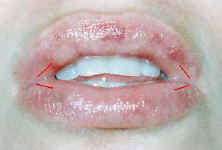Cheek augmentation can be done using either implants or injections. The implants that may be used are usually made from a solid silicone material. They will not feel soft to the touch (like silicone breast implants) when implanted, and will feel and look like natural bone in the cheeks.
These implants come in various shapes. Malar implants are the most common.
They will be placed directly on the cheekbones and will result in a more projected appearance to the cheekbones.
Submalar implants are not placed on directly on the cheekbones and are the ideal choice for those patients who want to improve the appearance of their “midface” region. This is great if your cheeks have a sunken in appearance or a permanently gaunt appearance that you would like to get rid of.
The other option is a combination of both the previous types. They will fill in the midface of the patient while also improving the profile of their cheekbones.
The incisions for this procedure are made in the top of the mouth right about at the gum line. The implants will then be slid in to position from below. This method carries some risk of infection since the human mouth has a large amount of bacteria in it. If you are concerned about that, your doctor is also able to make an incision externally instead—it would be placed near the eye, but it will leave a visible scar. Be sure to discuss your options with your doctor if you think you want the external incision option.
One important thing to note with this procedure, is that the implants MAY shift. This could become so bad that it moves up and begins blocking your vision.
If implants are not what you want, you can always look in to fillers or injectables. Hyaluronic acid compounds, like Restylane or Juvederm can be used—but these are not permanent options. An injection of your fat can be done as well, and would provide a more permanent solution. Choosing injectables over an implant is based on your current appearance and the changes you want to make, so be sure to ask your doctor about all of your options. One great thing about these methods is that there is no scarring and your recovery time will be less than with implants—although cheek implants typically only take about a week to recover from.
Check out some before and after shots to get an idea of what this procedure could do for you:
This is a popular procedure for both men and women. As you can see in these pictures, subtle is best. Both of these patients have a very nice looking bone structure in their after images. You can see the difference the implants have made in the relaxed appearance of the face. These implants will alter more than just your cheeks-- they can make wrinkles less noticable, change the shape of your lips/mouth, and overall restore a more youthful appearance.


















